‘We’re the cultural resistance’: the Ukrainian artists responding to the war
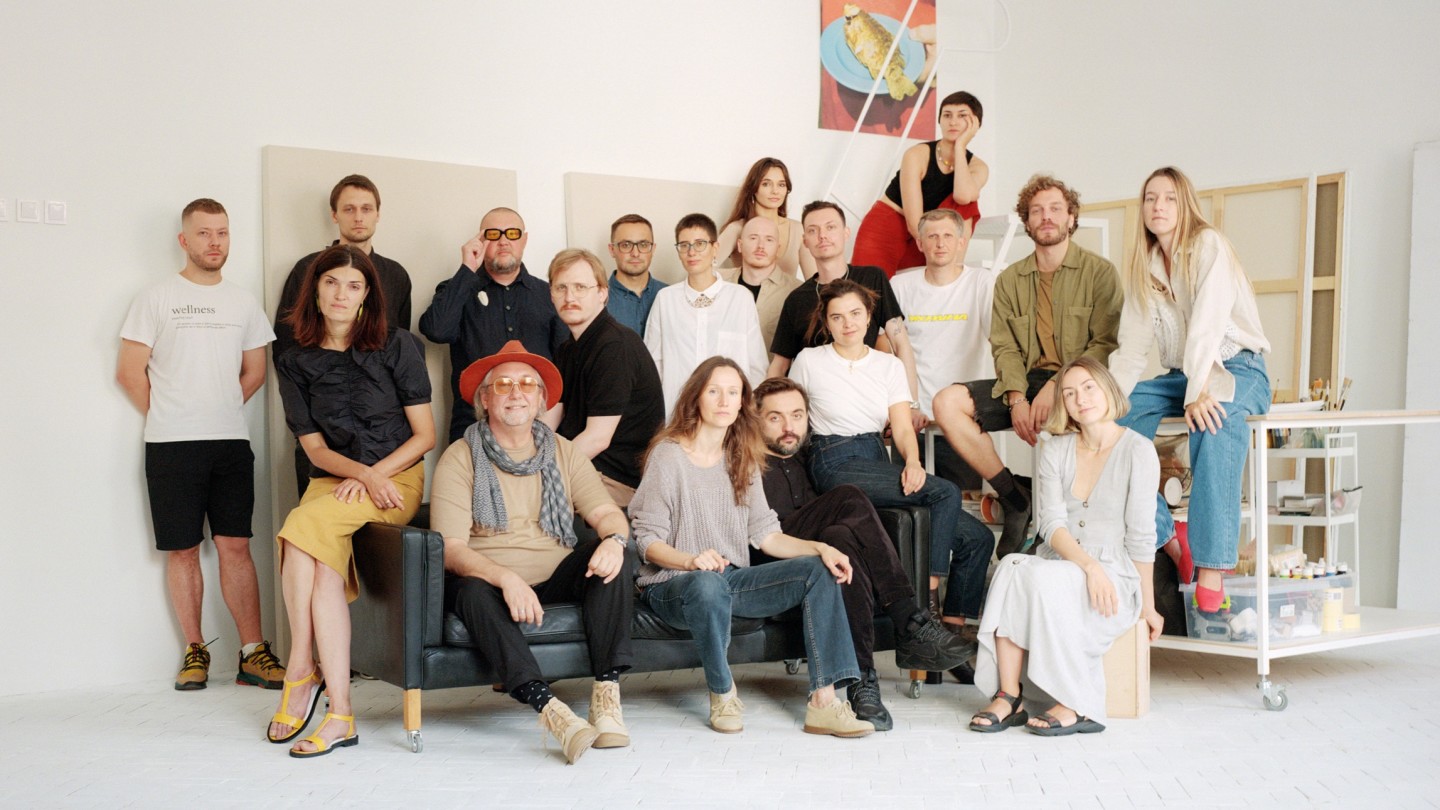
Roula Khalaf, Editor of the FT, selects her favourite stories in this weekly newsletter.
To mark a year since the beginning of the war in Ukraine, HTSI is republishing this article on the artists working to preserve the country’s cultural heritage.
In the first few weeks of Putin’s “special military operation”, when Kyiv was surrounded and more than two million citizens fled, many feared that the capital would fall quickly. In a war driven by one man’s belief that without Russia there is no Ukraine, Kyiv, the country’s cultural crowning jewel, became a primary target. But amid the shelling, destruction and ongoing brutality, a resistance movement has emerged – one powered by art, artists and the belief that Ukraine’s heritage should be protected at all costs.
How to help
Artists at Risk
artistsatrisk.org
Razom
razomforukraine.org/donate
SaveArtUA
saveartua.com
The Ukrainian Cultural Association in the UK
ucauk.com
Ukrainian Emergency Art Fund
ueaf.moca.org.ua
By March it became clear that a “new wave in Ukrainian art [was] approaching,” says Olga Balashova, head of the Museum of Contemporary Art NGO, which helped establish the Ukrainian Emergency Art Fund, an initiative founded by four prominent art bodies including Kyiv gallery The Naked Room. “Culture is one of the primary aims [of] the attack – it’s our aim to ensure that Ukraine’s voice is kept alive and vibrant.” Where exhibitions and productions have been cancelled, creatives have spun things around and launched independent projects. Take director Semen Gorov, who recently pivoted from a state-funded feature film to a documentary about Ukrainian artists living in the context of war. Or Masha Reva, who in April helped raise around €70,000 in humanitarian aid through the fundraising exhibition Under the Open Sky.
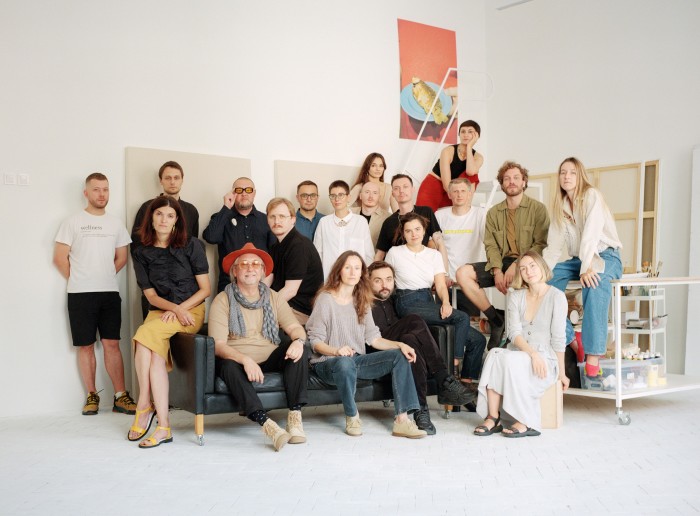
The group of creatives gathered for this feature, photographed by Lesha Berezovskiy in Reva’s studio, have chosen to remain in Kyiv for as long as they can. Some stay to help with the volunteer effort; others have camped out in museums to tend to exhibits. (Many institutions have hidden their collections in response to reports of Russian troops looting historical artworks.) All are united in their opinion that preserving Ukraine’s culture is crucial. “In Kyiv, it’s easier to be free,” says Balashova. “It always was, and still is, a melting pot of Ukraine.”
Mykola Ridnyi, 37, artist
“A lot of my works made from 2014 to 2022 reflect on violence caused by the war,” says Kharkiv-born Ridnyi, who predominantly works with video, and whose work is held in the permanent collections of Munich’s Pinakothek der Moderne, the Neuer Berliner Kunstverein and the Museum of Modern Art, Warsaw. “It’s impossible to reflect on the ongoing war when it encircles you,” he says. “Distance is needed to make new artwork.”
Oleksandr Burlaka, 40, photographer and spatial designer
When war broke out, Burlaka had been working on the design for an exhibition of works by Ukrainian new wave painter Oleksandr Roytburd. Now, he says: “My work is of little importance; I have to do my best to help the Ukrainian army, to care for my family and to communicate with people from other countries asking to unite together to survive.” He remains in Kyiv to help with the volunteer effort.
Svitlana Vechirka, 32, choreographer
“At first, dance appeared to be not important, not relevant,” says Vechirka, a former dancer for Kyiv Modern Ballet, one of the most progressive dance companies in Ukraine. But after war broke out, she “started to hold free dance improvisation classes to relieve stress and work through emotions”, she says. “Thanks to dance and bodywork tools, I’ve managed to cope with fear and apathy.”
Pavel Buryak, 31, director, writer and creative producer
“If all creative minds leave, who’ll develop this country?” asks Buryak, whose work spans films, music videos, commercials and documentaries. “We will have a long recovery period, so we will need all these people here.” A recipient of numerous awards – from festivals including Cannes Lions and UK Music Video Awards – Buryak has recently pivoted to helping promote Ukrainian fashion brands and creating content for president Volodymyr Zelenskyy’s platform United24.
Artem Klimchuk, 35, fashion designer
Klimchuk’s demi-couture collections are best known for their minimalist silhouettes; his embroidery work was seen on a shirt worn by Olena Zelenska, Ukraine’s first lady, in 2021. “It’s my home, my patrimony; I belong here,” he says of the decision to stay in his native Kyiv. “I’ve started to appreciate the people I work with even more – and also the clients who buy my clothes.”
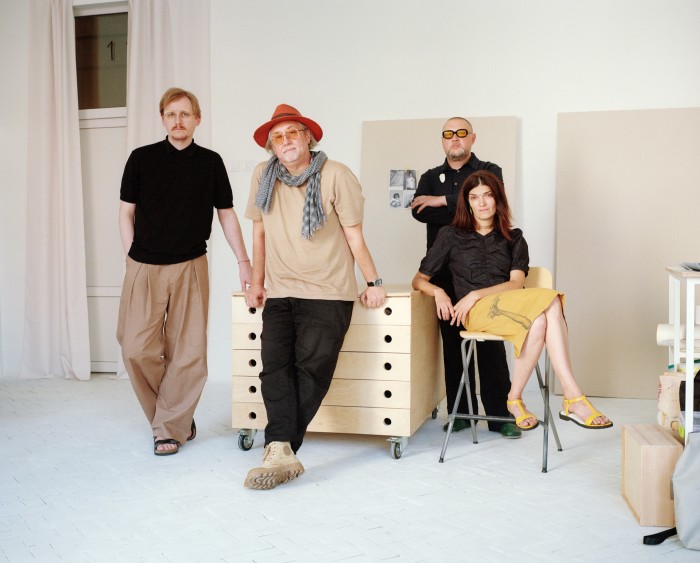
Semen Gorov, 51, director
This year, Gorov was scheduled to shoot a full-length feature film funded by the state, but the project was cancelled at the end of February. Instead the director, whose work includes music videos and musicals, is creating his own film; a response to the experience of being an artist living in the context of war. “Kyiv and Ukraine need me,” he says. “If everyone leaves, it means no one needs this city and country.”
Katya Zuieva, 29, architect
The co-founder of architectural practice AKZ Architectura says she remains in Kyiv “to help the city”; offering lifts, cooking for the military and supporting the elderly. “Ukrainians are the bravest,” says Zuieva, who still has clients looking to “live their best life” and keep building houses. “[We] are alive and continue to create and rejoice as much as possible.”
Liera Polianskova, 39, and Ivan Svitlychnyi, 33, artists
In the first few months of war, the Kharkiv-born couple camped out in the National Art Museum of Ukraine, where they helped maintain its exhibits. Previously both had contributed to the Ukraine pavilion at the 2017 Venice Biennale, and been named winners of the State of the ART(ist) Call, a platform promoting creatives at risk of oppression and war. “Work has become escapism,” says Polianskova. “Art helps you understand what you live for.”
Vasylyna Vrublevska, 38, photographer
Vrublevska works with magazines including Vogue Ukraine, as well as fashion brands such as RCR Khomenko, Elenareva and Karavay. She is best known for her portraits and cultural reportage, such as the images of a Christmas celebration in a tiny Ukrainian village near the border with Romania. “I started to take a lot of documentary photos of the Russian invasion,” she says of her current focus. “I feel I can do more here than anywhere else.”
Masha Reva, 34, artist and creative director
“Being at home and reflecting on what is happening here is the most honest approach to my work,” says Reva, who moved to Kyiv in 2005 and whose swirling abstract artworks have invited interest from creatives including fashion designer Simon Porte Jacquemus and Harry Styles, who used one of Reva’s colourful pieces as a backdrop in his video for “As It Was”.
Reva is focused on bringing Ukraine’s cultural talents to an “international audience”: opening in New York in November is I Am U Are, a curation of Ukrainian art, design and technology.
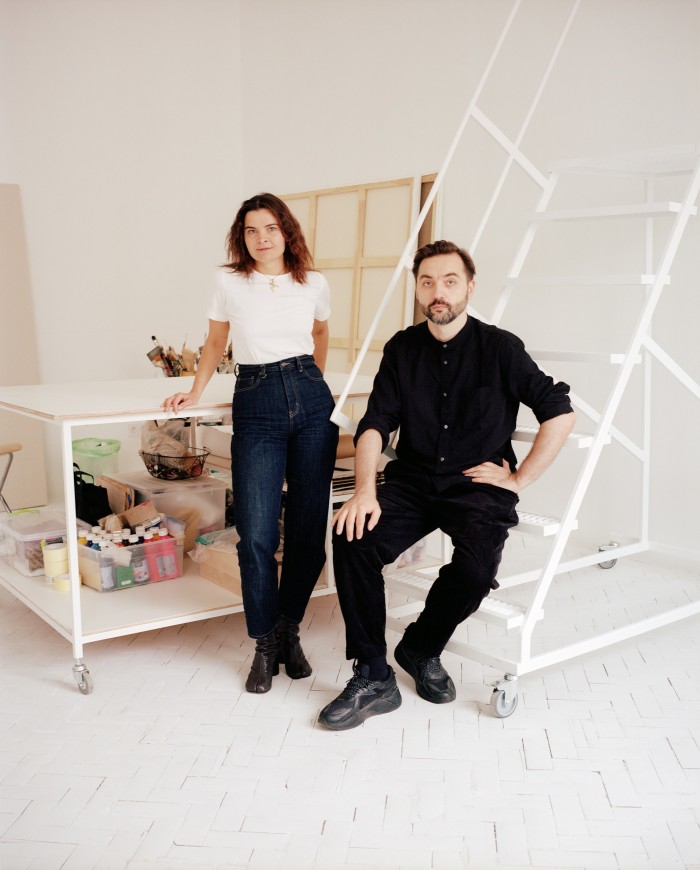
Kostiantyn Doroshenko, 49, writer, critic and curator
Doroshenko has staged Ukrainian art exhibitions in the US, Asia and Europe. But during the first weeks of war, he approached his work with apathy and frustration. It wasn’t until he discovered the “humaneness and mutual aid” of fellow Ukrainians that he felt inspired; the root of that inspiration was Kyiv. “Here is my library, the Dnipro river,” says Doroshenko. “Here the streets, houses and districts are close and interesting – from Pechersk, seething with life and diversity, to the soviet buildings of Lisovyi Masyv.”
Andrii Siguntsov, 30, curator
As chief curator at the Museum of Odesa Modern Art, Siguntsov is typically in charge of the building’s collections and acquisitions. Before that, he headed up Kyiv Art Week, organising a series of concept parties that grew into its own festival. “Thanks to its culture, Ukraine has defended its right [to be] on the map,” he says. “All my efforts will now be directed to the development and preservation of modern culture.”
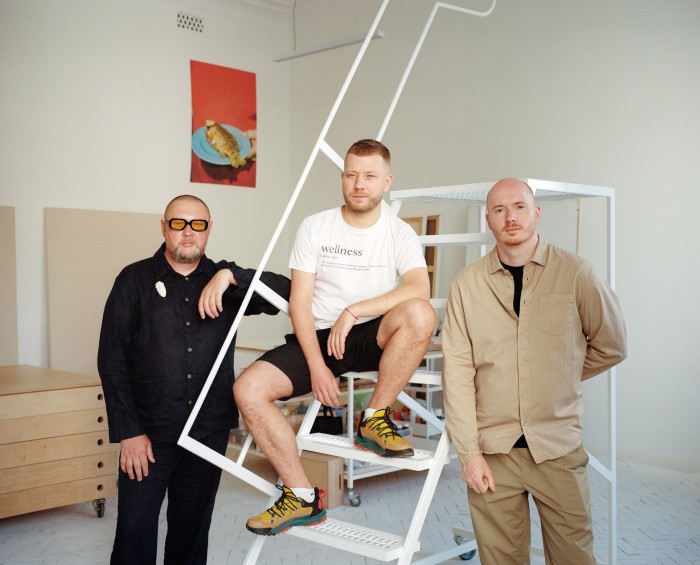
Sasha Kurmaz, 36, artist
“For a while I could do absolutely nothing,” says Kyiv-born Kurmaz, speaking of the disruption to his practice in the immediate aftermath of Putin’s attack. “I felt like I had lost my voice in the face of the horrific reality.” Working in a wide range of media – “photography, video, public intervention and performative situations” – Kurmaz creates wry portrayals of social issues and power structures, many of which are presented in public spaces. He says he remains in Kyiv “because it is my home”.
Myroslav Laiuk, 32, poet
“Kyiv is the centre of the free world nowadays,” says Laiuk, senior lecturer of literary theory at the National University of Kyiv-Mohyla Academy. He believes in “returning Ukrainian culture to the international discourse and explaining to the west why action is required and why we are to be responsible for what happens now”. Laiuk also volunteers on the outskirts of Kyiv, clearing ruins and helping with repairs.
Iaroslava Strikha, 34, literary translator
Strikha is currently translating Susan Sontag’s On Photography, but she is also the Ukrainian voice for the likes of Henry David Thoreau, Julian Barnes, Kate Atkinson, Paul Auster and Don DeLillo. Having studied at Harvard University, where she completed a PhD in Slavic languages and literatures, she can no longer imagine living anywhere but in her native Kyiv. “The risk of missile strikes is a fair tax to pay for living in the most exciting city in the world,” she says.
Dan Vakrhameyev, 34, and Kateryna Vakhrameyeva, 35, product designers
“We are determined, positive and united,” say the husband and wife behind design studio +kouple. Dan and Kateryna founded their brand after 2014’s Revolution of Dignity, which saw the ousting of president Viktor Yanukovych. In the face of war, production will remain in Kyiv “no matter the circumstances”, they say. “We believe in the power of bright people. These times [are] for strong individuals to keep working, creating, producing and fighting.”
Olesia Trofymenko, 40, artist
An alumnus of Kyiv’s National Academy of Fine Arts and Architecture, Trofymenko creates installations that combine paint and embroidery and are driven by “emotions and inner music”. Most recently, her work has appeared in Dior’s fall haute couture show, a collection inspired by Ukrainian folklore.
“My home is Ukraine,” says Trofymenko of her decision to stay in Kyiv. “After the war began I started to feel more responsible [for] my artworks and the words I say as an artist.”
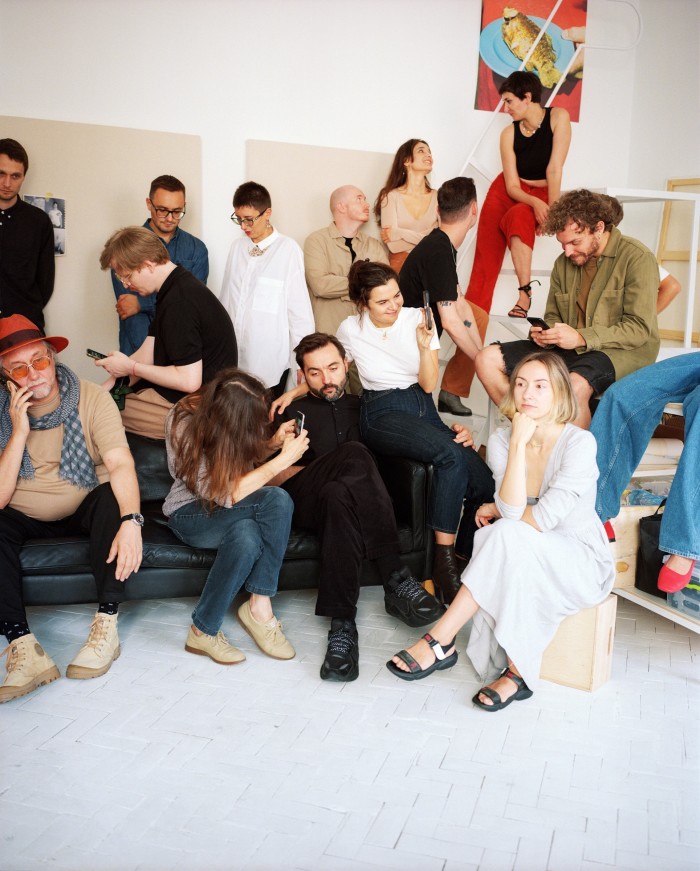
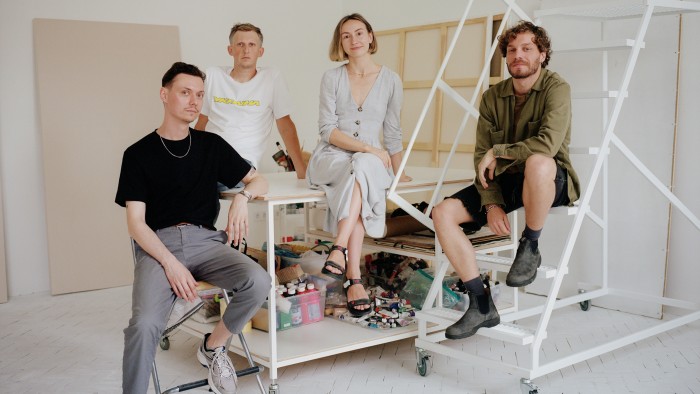
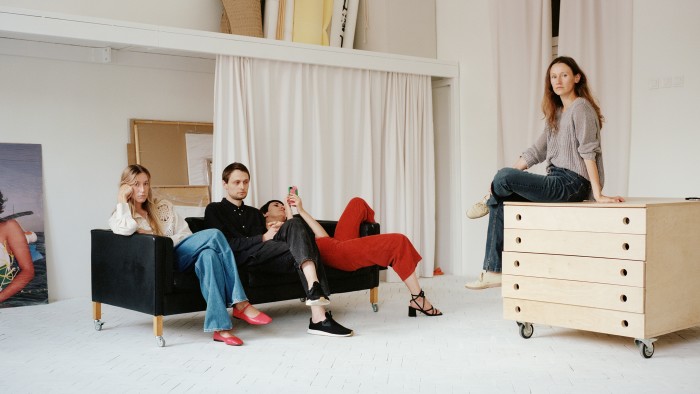
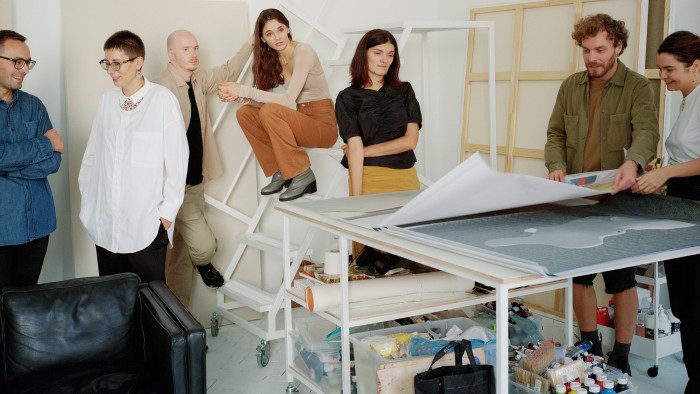
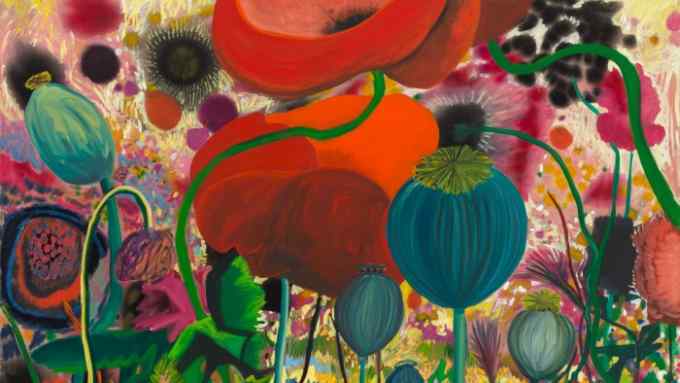
Comments